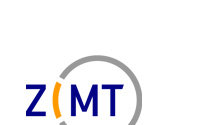On this page you can find general notes concerning software installed on the cluster, as well as our software installation policy. We also describe to what extent you can install software yourself.
For some larger pieces of software that are used by many users (e.g. MATLAB) we have created detailed instructions on how to use them on the cluster. These you can find in the list on the left hand side under “Application Software”. We have done the same for commonly used programming languages here.
Available software
Application software is available on the cluster in the form of environment modules. You can show a list of available modules with the module avail command.
Sources of software
We install software on the OMNI cluster only from specific sources:
- From the RPM repository of the operating system vendor (Rocky Linux). This mostly concerns software that is part of the operating system or offers similarly basic functionality.
- From the Bright Cluster Manager repository. This is the source for our Jupyter and Intel Parallel Studio installations, for example.
- From the OpenHPC distribution. All OpenHPC software is already installed on the cluster. OpenHPC is an initiative for packaging and redistributing scientific software. Examples for OpenHPC software on the OMNI cluster are OpenMPI and the GNU Scientific Library.
- Some software, both commercial and open-source, is preinstalled centrally. MATLAB and ANSYS are examples for this.
Installation of new software
In order to keep maintenance overhead manageable, we have introduced some conditions that software has to meet before we install it. However, we now also offer more possibilities for you to install software yourself.
Installing software yourself
You have several possibilities for installing software yourself. The most comfortable way is probably the package manager conda, which is installed on the cluster and whose usage we describe here. It is also possible to install Python or R packages with the corresponding package manager (e.g. pip in the case of Python) yourself.
Note that you can also use the software Singularity to build containers yourself. Within a container you can install any software.
Additionally, some application software products allow you to install them inside your home directory. This depends on the software and you need to consult the documentation for the software in question. Note that you can in principle write your own environment module files for your own software. This is completely optional, but may make it more comfortable to use in the long run.
Central software installation
We decide on a case-by-case basis which software we install centrally. If you would like us to install a specific piece of software, please contact us via e-mail (hpc-support@uni-siegen.de). Please add the following information:
- Who will be the person who is responsible for the software? This person will be our contact for all things concerning the software, since we may not have any expertise for the software in question.
- Do the terms of use for the software allow using it on a cluster? We cannot install software whose license terms preclude cluster usage.
- How does licensing work for this software? License administration is not done by the HPC Team. It is the duty of the person responsible to ensure that the license terms are kept. The HPC Team will add a disclaimer that specifies the conditions under which the software may be used, but will not enforce access via technical means.
- How many people will use the software? We will not install software for a single user.
- Where will installation files come from? It must be clear how the installation files can be obtained, this also apply to later updates. A lot of commercial software products require that a user account is made on the vendor’s website.
- Which version(s) are to be installed? We will not install more than two versions of a software centrally. The responsible person needs to decide which version(s) we should install. If individual users require an update, the responsible person needs to decide this.
- Is the software compatible with the cluster’s operating system? The operating system is CentOS 8, which is continuously kept up to date. The responsible person needs to check whether the software is compatible, this also includes later updates. We also reserve the right to uninstall software if compatibility is no longer given after an update of the operating system. You can display the exact version of the operating system with the command
cat /etc/centos-releaseon the cluster.
If the software is not used for a longer period of time, the responsible person will be notified about the inactivity and the pending uninstallation of the software. If the responsible person does not react to the notification within two weeks, the software will be uninstalled.


